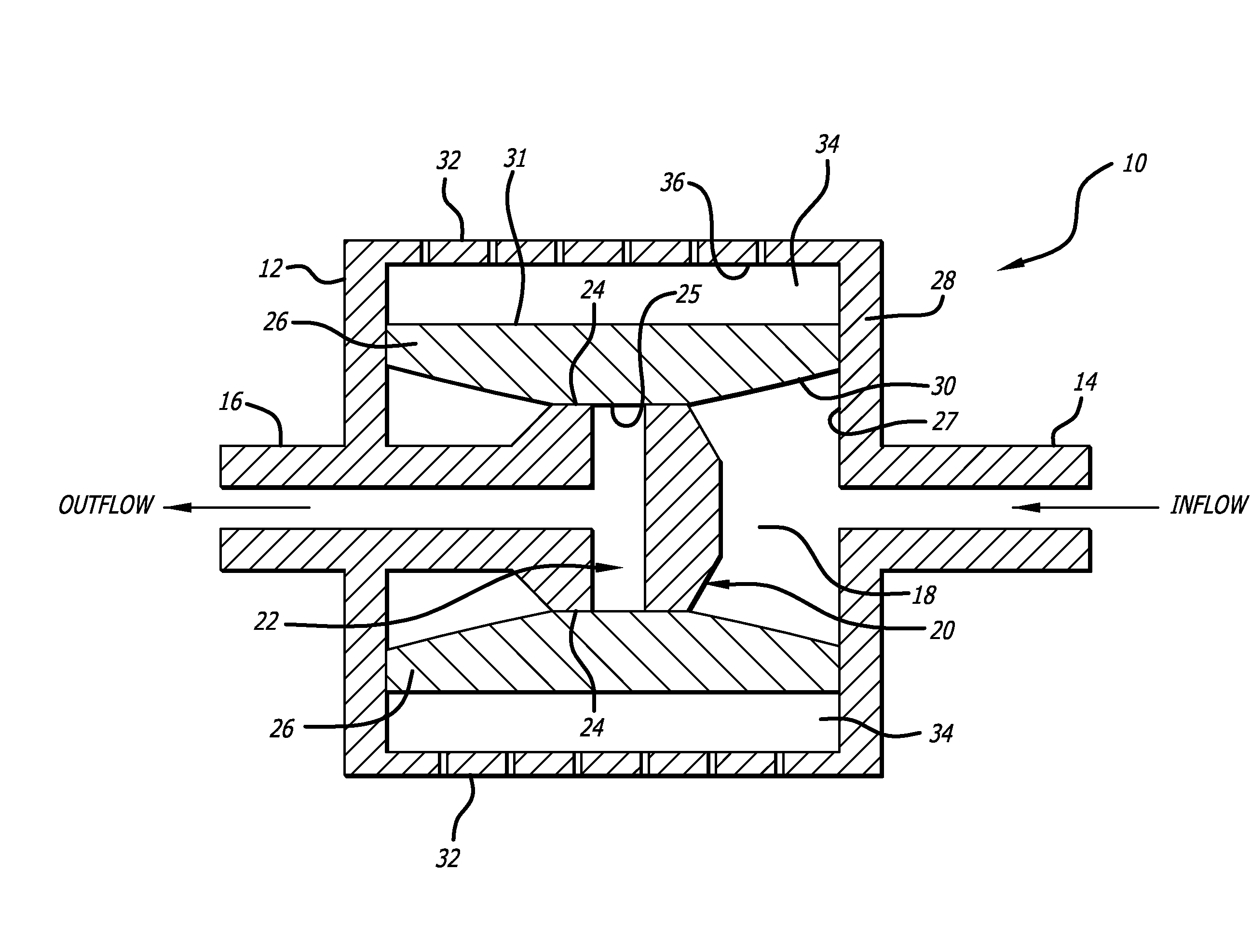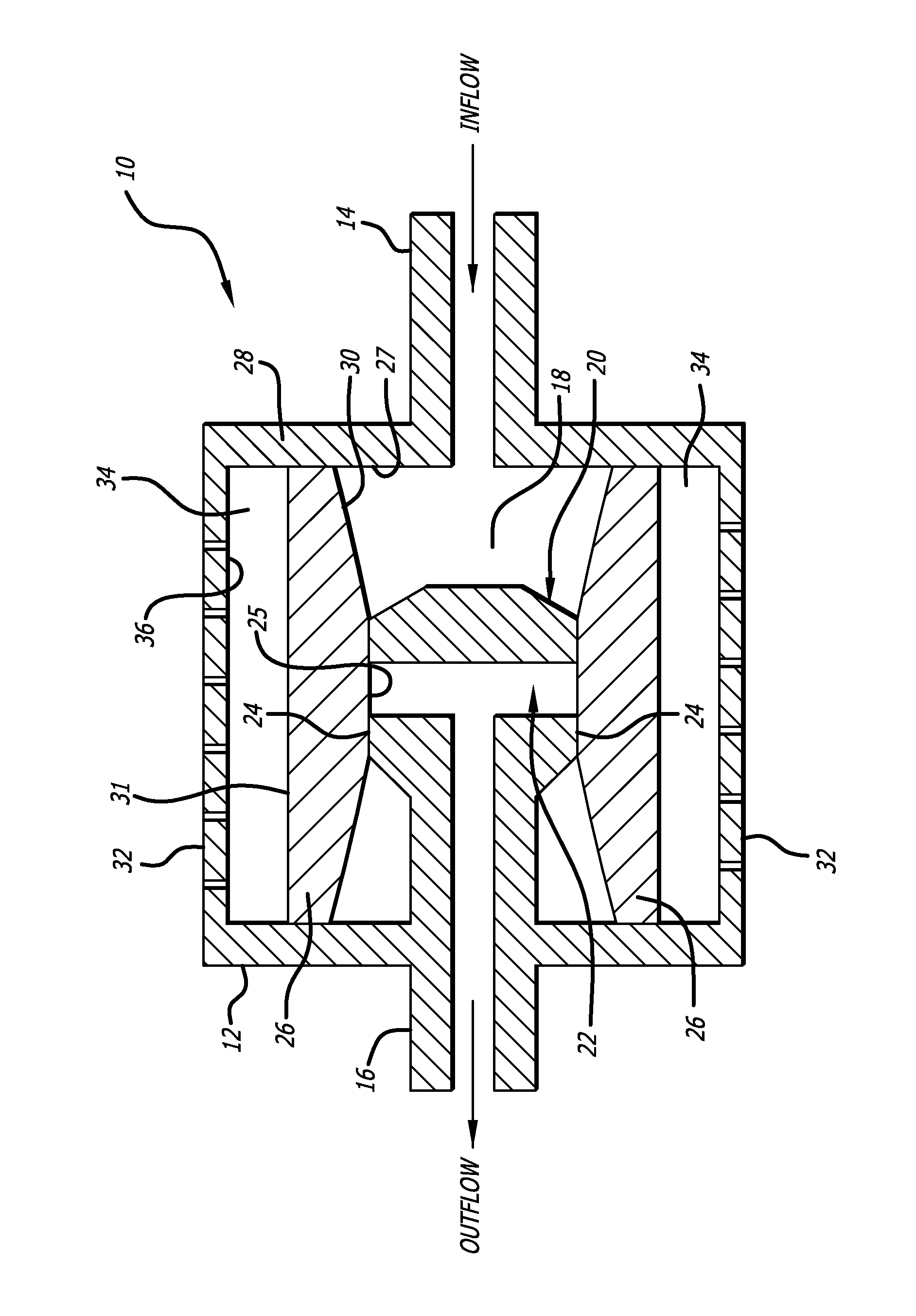Shunt valve for controlling siphon effect
a shunt valve and siphon effect technology, applied in the field of surgical implanted delivery and drainage catheters, can solve the problems of excessive fluid flow through such a shunt system, preventing adequate fluid flow, and fluid flow, so as to prevent tissue ingrowth into pores and prevent adverse mechanical influence of overlying body tissu
- Summary
- Abstract
- Description
- Claims
- Application Information
AI Technical Summary
Benefits of technology
Problems solved by technology
Method used
Image
Examples
Embodiment Construction
[0019]Referring to the drawings, which are provided by way of example, and not by way of limitation, the present invention provides for a valve such as a shunt valve 10 adapted to be surgically implanted in a tissue space of a body of a mammal for draining fluid from one portion of the body to another for controlling hydrostatic siphon effect, to prevent excessive drainage which may be caused by the siphoning effect of hydrostatic pressure in a distal shunt catheter (not shown).
[0020]The valve includes a housing 12, formed to have a shape of a disc when viewed from the top or bottom, for example, although the housing can also be configured to have a cylindrical shape when viewed from the top or bottom. The valve includes an inlet connector 14 configured to be connected to an proximal catheter (not shown) such as surgical tubing or a ventricular catheter, and an outlet connector 16 configured to be connected to a distal catheter (not shown) such as surgical tubing or a peritoneal cat...
PUM
 Login to View More
Login to View More Abstract
Description
Claims
Application Information
 Login to View More
Login to View More - R&D
- Intellectual Property
- Life Sciences
- Materials
- Tech Scout
- Unparalleled Data Quality
- Higher Quality Content
- 60% Fewer Hallucinations
Browse by: Latest US Patents, China's latest patents, Technical Efficacy Thesaurus, Application Domain, Technology Topic, Popular Technical Reports.
© 2025 PatSnap. All rights reserved.Legal|Privacy policy|Modern Slavery Act Transparency Statement|Sitemap|About US| Contact US: help@patsnap.com


